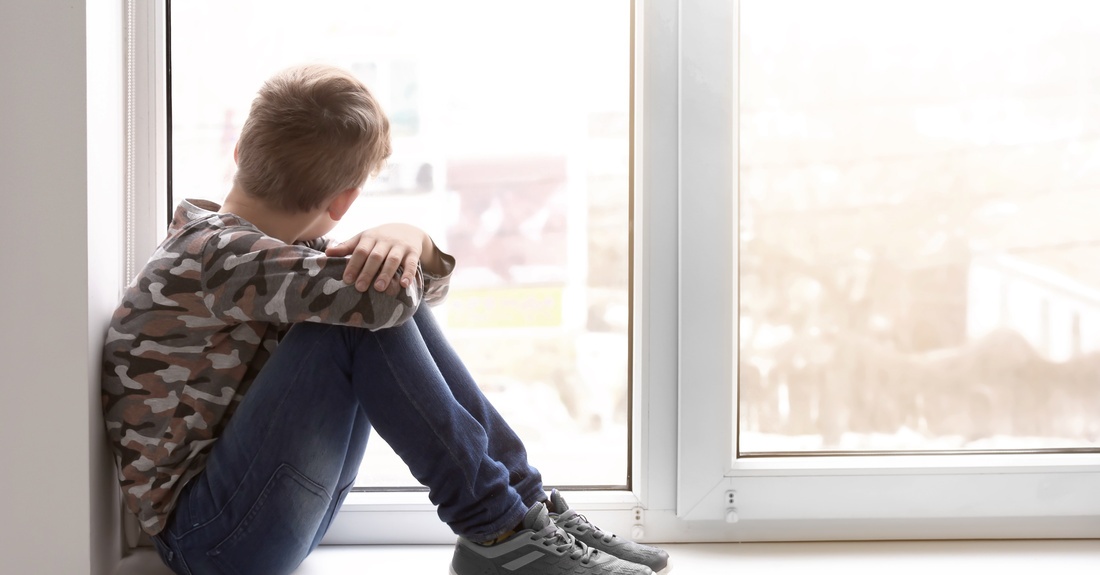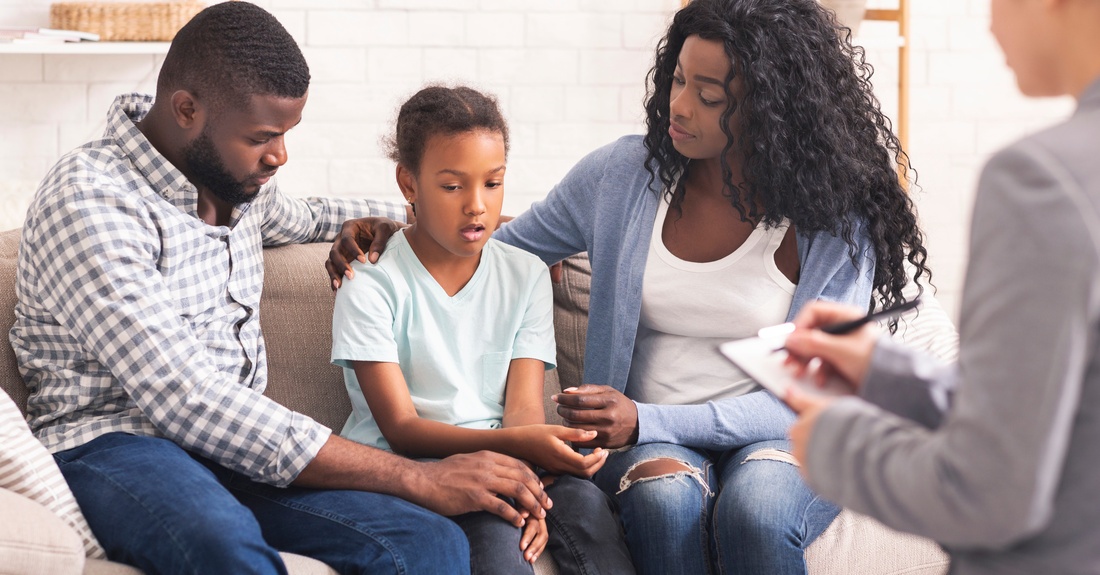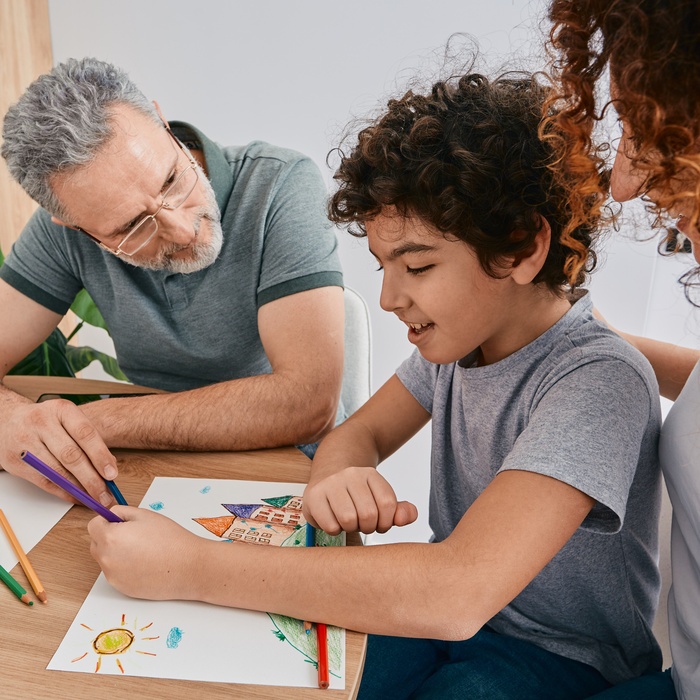
Children’s mental health conditions can be as diverse as physical health conditions. Some health struggles can be short term, while some can be enduring. Just as some children may be more prone to developing ear, nose and throat ailments or eyesight issues, some kids may be more prone to experiencing a mental health disorder.
Kids’ mental health is no less important than their physical health, though mental health is often shrouded in much more stigma than physical health. Caring for a child’s overall well-being is the best way to ensure they reach physical, emotional and cognitive developmental milestones. Learn more about child mental disorders, how to recognize them and how to advocate for your child.
Why is children’s mental health important?
Childhood and adolescence are times of exponential growth, and developmental milestones come rapidly compared to other stages of life. However, experiences during this period compound upon each other, meaning if a physical or mental health condition causes a child to miss or delay a developmental stage, they are more likely to be delayed in reaching future developmental stages.
Teaching and championing children’s mental health awareness in the home helps them learn to recognize and take care of their overall well-being. Talking about and seeking mental health support for children shows them that mental health is just as important as physical health. A healthy mental state and mental health supports in childhood and through the teenage years give them the building blocks to make these transitions and develop into happy, healthy and functioning adults.
What are the 5 most common mental disorders in children?
Before we can talk about the most common child mental disorders, we need to know what a mental disorder means. A mental disorder is a serious condition or change that affects how children typically learn, behave or handle their emotions, according to the Centers for Disease Control and Prevention.
The following is a child mental disorders list.
- Mood disorders
- Depressive disorder: Commonly known as depression, depressive disorder is marked by a depressed or “down” mood for an extended period of time, or at least two weeks. Depression involves a loss of hope and interest in people, activities and other things a person used to enjoy. Depression is one of the most common mood disorders kids and teens experience, and those who are diagnosed with it are also often diagnosed with an anxiety disorder. In fact, about 3 in 4 children with depression also experience anxiety.
- Bipolar disorder: Bipolar disorder consists of periods of abnormal swings in mood and energy levels that last at least four consecutive days. These moods are often characterized by a persistently elevated mood — which could include gleefulness or even irritability — and increased energy. The downswing from this mood often includes low energy and feelings of intense sadness, hopelessness and negativity.
- Anxiety disorders
- Generalized anxiety disorder (GAD): Those who experience generalized anxiety disorder have excessive and intense worries about many events, activities or situations. While they may have certain triggers that elevate nervous or anxious symptoms, they likely have anxiety about a variety of scenarios. These anxious feelings are often out of proportion to the probability that the anticipated event will actually take place. Symptoms of generalized anxiety disorder often interfere with day-to-day life and cause physical symptoms, like panic attacks, sweating, shortness of breath, nausea, heart palpitations, shaking and more.
- Social anxiety disorder (SAD): Similar to generalized anxiety disorder, the triggers and symptoms for social anxiety disorder are mostly linked to anxious thoughts and feelings surrounding social situations, causing an individual to avoid social settings.
- Post-traumatic stress disorder (PTSD): Kids and teens can develop PTSD after severely traumatic events, such as exposure to death, serious injury, sexual violence or other trauma. Triggering scenarios can cause them to reexperience their initial trauma. Symptoms can include dissociation; emotional or behavioral issues; anger or irritation; and fight, flight or freeze responses.
- Obsessive-compulsive disorder (OCD): Those who have OCD obsess over certain topics or have compulsions they have trouble controlling. The subjects individuals focus on are specific to each person, but common obsessions and compulsions center on cleaning, symmetry and patterns as well as fears of harm coming to oneself or a loved one.
- Attention-deficit/hyperactivity disorder (ADHD): Kids and adolescents with ADHD have great difficulty staying focused and controlling their behavior due to hyperactivity. This is one of the most common mental health disorders kids and adolescents experience with 11.4% being diagnosed with ADHD.
- Behavioral disorders
- Oppositional defiant disorder (ODD): Kids diagnosed with oppositional defiant disorder portray a pattern of negative, aggressive, hostile or defiant behavior. They may have trouble controlling their temper, argue with adults, refuse to follow rules, are resentful or spiteful, and have difficulties getting along with peers.
- Conduct disorder (CD): Those who have CD exhibit persistent behaviors that violate basic rights of others. For example, they may show aggression to people and animals, destroy property, lie often, commit theft, or break rules consistently by actions like missing curfew or being truant from school.
- Eating disorders: These mental health disorders can have negative and sometimes life-threatening physical health implications.
- Anorexia nervosa: Anorexia is characterized by a need for control and an extreme fear of gaining weight. Individuals with anorexia restrict how much they eat to control their weight and may be severely underweight, though many can appear to be a healthy weight and still be struggling with this condition.
- Bulimia nervosa: Those with bulimia binge by consuming a lot of food or drink at one time and then purge by vomiting, using laxatives, exercising extremely or using other methods.
- Avoidant/restrictive food intake disorder: Much more common in kids than in adults, those who struggle with this mental health condition restrict the foods and drinks they consume, though not because of a fear of weight gain. They may have problems with certain textures, sensations, tastes or smells. It’s also possible they associate negative feelings with certain foods.

What are the early signs of mental illness in children?
Childhood emotional disorder symptoms may be difficult to recognize, especially in younger children. Young children have a more difficult time than older kids learning about and regulating their emotions overall, making it more likely that mental health symptoms are written off as simple emotional dysregulation or a “phase.”
Regardless, children as young as 3 years old are documented to have had some of these most common mental health disorders.
As described above, early signs of mental illness in children may be hard to detect, but telltale signals often center around an abrupt change in behavior, such as a shift in mood, habits, appetite, energy, movement, etc.
What are 5 symptoms that a child may have a mental health disorder?
Signs of mental illness in children can be specific to a child’s age and their mental health condition. Some of the common symptoms fall under these five categories.
Abrupt changes: This can include severe changes in behavior, appetite, energy levels, activity levels and sleeping patterns.
Isolation or withdrawal: A child or teen may isolate themselves or withdraw from people or activities they used to enjoy.
Depressed mood: If kids are more tearful, quiet, seem devoid of emotion or lack excitement for things they used to be excited about, they may be suffering from depression or another mental health condition.
Anxious actions and symptoms: These can include constant, out-of-proportion worries about people, places or activities. Kids may also have stomachaches, shortness of breath or full-blown panic attacks, headaches, or muscle aches.
Thoughts or actions related to self-harm: If kids are harming themselves or are talking about self-harm or suicide, immediately call 988, the National Suicide & Crisis Lifeline.

How do you identify mental health issues in children?
Signs of mental illness in 3-year-olds may be difficult to detect because of the lack of emotional regulation and understanding toddlers experience.
However, signs of mental illness in 5-year-olds to signs of mental illness in 8-year-olds or older may be easier to detect and diagnose for several reasons. Older kids have more established patterns of behavior. They also are more likely to be around professionals trained to recognize mental health conditions.
What to do if your child has mental health issues?
If you suspect your child has mental health issues, don’t downplay or ignore their symptoms.
Early intervention is the best way to identify the root cause, have your child learn healthy coping mechanisms, teach the family and support system how to provide the best environment for them, and get back on a path to overall well-being.
How do you discipline a child with mental illness?
Understanding your child’s triggers and how their mental health condition is causing them to react are crucial to addressing both positive and negative behaviors. All children experience emotional dysregulation, overwhelm and periods of negative behavior, just as adults have a bad day or week.
While providing consequences for negative behavior is important to helping children learn how to react appropriately, consequences should come after children are able to calm down. They also must pertain to the misbehavior so children are able to correlate the behavior with the scenario.
For example, if a child wants a cookie and hits their parent when they don’t get one, taking away TV for a week doesn’t teach them what to do the next time they don’t get a treat. A consequence that would align is taking away the treat for a day or two.
Let’s examine a few scenarios on how to discipline a child without a mental health condition and a child who has an anxiety disorder.
Scenario 1: A child is overwhelmed but does not have a mental health condition
For instance, if any child is in a new space with loud noises and a big crowd, they may feel overwhelmed. Because kids may lack the skills to recognize and say that they’re feeling overwhelmed, they may instead have an out-of-control tantrum if they are feeling overwhelmed and don’t get what they want. They may hit or kick. If an adult tries to reason with them in the middle of a tantrum, a young kid’s brains likely can’t process what they’re saying.
After the child calms down, the adult can acknowledge their feelings and tell them how to respond the next time: “You were very angry that you didn’t get a treat at the store. It was really loud and busy at the store. I wonder if you were feeling overwhelmed. If you feel angry or overwhelmed again, you cannot kick or hit. You can tell me you’re feeling overwhelmed. Because you hit me, we are not going to have a treat today. Tomorrow, we will come back to the store and have a chance to try again for a treat.”
Scenario 2: A child with an anxiety disorder is overwhelmed
When parenting a child with a known anxiety disorder, it’s critical to prepare your child before they are in a situation that may cause them anxiety. Talk about what they might experience in a new situation and work together to talk about how to handle it. It can sound like this: “We’re going to a new store, and it might be really busy and overwhelming, but I believe in you. If you get too overwhelmed, you can touch my arm and use our safety word so we can go outside and take a quick break before we try again. If you do a good job, you can have a treat.”
If your child does begin to have a tantrum, know that their anxiety may be getting the best of them. You can help by taking them to a quiet space to calm down. Once they calm down, you can talk about how to use the coping mechanisms earlier the next time they feel overwhelmed.
No kid, especially a child with a mental health condition, is acting “bad” on purpose. Their behavior is communicating a need. For children with mental health conditions, their needs may just happen to be more specialized.
How to support a child with mental health issues?
While it may be tempting to scroll through children’s mental health articles for hours on end, you may be left with mixed signals and misinformation. The best way to support a child with mental health issues is to connect them with professionals who can help them and help you learn how to best provide for them. Heart of Iowa Community Services (HICS) can help you get connected to a mental health professional close to home.
It’s also important to be mindful of your child’s mental health condition and their symptoms. They likely are not in control of their emotions or behavior, so it’s important to react without judgment to any negative behaviors and focus on teaching them how to properly react to triggers.
Children can learn and address mental health conditions, and there is hope for them to lead happy, healthy and fulfilling lives despite any mental health conditions. But learning how to cope takes time, guidance and support.
